I have been involved in personal development for over 35 years and a key part of my learning process is understanding the power of influence and how it’s used in business and personal life.
 In the 1980s and 1990s I worked extensively in the sales and marketing sectors being responsible for two startup operations that later became multi million pound concerns. I also had experience of negotiating a series of multi million pound contracts and still offer business trainings on a one to one basis as well as in house for companies. In developing the Provocative Change Works model I have learned a great deal about behavioural patterns and I have taught this PCW model to many established business concerns.
In the 1980s and 1990s I worked extensively in the sales and marketing sectors being responsible for two startup operations that later became multi million pound concerns. I also had experience of negotiating a series of multi million pound contracts and still offer business trainings on a one to one basis as well as in house for companies. In developing the Provocative Change Works model I have learned a great deal about behavioural patterns and I have taught this PCW model to many established business concerns.
Changing mediums for influence and the emergence of new technology
In this internet age we are literally bombarded with all manner of communications seeking to influence our behaviour. There are literally thousands of books advocating “secrets of influence” and in these tougher economic times companies are paying greater attention to marketing and how they generate market share. In the music industry the old model of record labels has given way to artists now promoting themselves and exploring new ways to connect with fans. Websites like YouTube have become game changers in changing how we communicate and influence each other. Social media has also massively changed the world of sales and marketing and digital delivery mediums like Netflix have changed how we consume TV programmes. In short the world is changing and it’s never been more important to pay attention to how we influence ourselves and those around us. This short article explores the core ingredients essential for influence and how these can translate into personal and company success. Much of what I write here may be considered common sense, but as a professional colleague once remarked “sense is often not that common!”
The art of getting attention, getting on the radar!
The first rule of successful influence is to “get on the radar” and get noticed! This may seem blindingly obvious, yet many companies and individuals fail even to achieve this! The three most successful companies in the world today are
Consider that all these companies have in common which make them household names across the planet. All these companies have a very clearly defined identity, in terms of their core message out to the world. They have captured the world’s attention in terms of their respective markets. At one time there were many search engines, how people talk about “Googling” for information. There are many mp3 players in the world, yet most people talk about “I pods” as opposed to “mp3 players” Coca Cola has a long standing competition with Pepsi, but still remains the market leader. All these companies use primary colours and specific geometrical styles in their marketing and communicate their message across a number of different platforms. Apple and Google in particular are exploring how to expand their markets with new products and services. In short these companies are “on the radar” and they have spent considerable time and energy creating this market share.
Difference dictates and the power of editing in influence
In marketing is essential to remember that “difference dictates” If you don’t stand out then you will never be noticed by potential customers. Sound and vision are essential ingredients in determining how we feel and how we are influenced. Steve Krug author of the excellent book “Don’t make me think” observed that online people don’t read they browse for content. This means that everything presented online needs to be simple concise and impactful. He commented
“Making every page or screen self-evident is like having good lighting in a store: it just makes everything seem better.”
The key phrase here is “self-evident”. Most people don’t want to have to read pages of text which is why video has become a key medium in creating useful influence. I always advise companies to use video in their communications, BUT to pay great attention to how this is created and delivered. If you are considering producing a promotional video for yourself or company as with all promotional and marketing initiatives ask yourself the following crucial question
“What’s its purpose?”
This may seem like an obvious question, BUT often this is not especially well defined. In the same way when creating ad copy, video content needs to be concise and focused, so the message is obvious. This means carefully considering every frame of what is being shown and the subsequent impact that is generated. When writing advert and website copy the same rules apply and edit, edit, edit to make any message more impactful and influential. If when you ask this “what’s its purpose?” question and you don’t know the answer, then you are most likely on the wrong track and need to reassess the core message you wish to communicate! Remember many major businesses will employ copy writers to create the best possible copy, so it’s worth spending time really thinking about this and getting other views once you have a few versions of what you intend to use.
“Don’t’ you wonder sometimes about Sound and Vision” – David Bowie
The importance of how things look
Google recently changed its algorithms so website now need to be mobile friendly in order to rank higher on Google. Personally I welcome this change as it means for the most part that people have to edit and simplify content. When you look at anything online the brain factors in the following in this order
In publishing editors’ talk about “the form” and “the content” The form is how something looks and the content is what is written. The same is true for websites. If the colours and the geometry of the site is too cluttered then often customers won’t bother reading the content. If the content is written in small text, often people won’t bother reading as it’s too much effort. If the visual look of the site is difficult on the eye, we have a similar problem! There’s an old saying “You never get a second chance to make a first impression” and therefore if you want to successfully influence customers then it’s crucial to pay attention to what you communicate and how you are doing this. There is a whole psychology to colour in terms of how colour and geometry operate to best effect and what creates a more lasting impression.
The importance of how things sound
If you are using the phone as a medium for generating customer interest, it’s essential to pay attention to how you sound and the structure of what you say. It’s generally recognised that when someone receives a call either personally or in business they think the following
- Who is it?
- What do they want?
In telesales and marketing you have 7 – 10 seconds to make a positive impression if you are going to successfully get a client’s attention. In this time frame you have to achieve the three following objectives and communicate
- Who you are
- Where you are from
- What you are ringing this person and crucially give them a reason to want to stay on the phone and listen to what you have to say!
The third point is usually where people spectacularly fail. Often marketers waffle when making calls and don’t sound at ease at all in how they communicate. This is especially true with the PPI businesses which in my view have created an all-time low in dreadful marketing. In some cases it would in my opinion almost be impossible to do a worse job! One memorable example was a call to me from overseas where a man in broken English spouted
“You have accident!”
There was no introduction of who he was or where he was from! These days when I receive unsolicited phone calls I respond by asking the question
“Did I ask you to call me?”
The answer is of course always “no” so this allows me to point out in a time effective manner that this is an unsolicited phone call.
The other key consideration in becoming a successful influencer by phone is to ensure that how you sound captures the client’s attention. I have had sales people sound like robots when communicating on the phone and often the reason for this is that they are reading off a script. When people read and then speak, this removes a great deal of the natural expression that occurs in human communication and the result is often a very flat dull interaction. Good voice tone and inflection are crucial in being a powerful influencer. Think about talk over artists for adverts, comedians, and audio book presenters. Which ones get and maintain your interest? Pay attention to how they sound and how they use language to gain and maintain attention.
Mind your Language
Smart businesses and individuals appreciate the importance of paying attention of how to best use language. We make sense of the world around us through our senses and when we communicate using sensory rich language, we are far more likely to be more effective influencers.
Influential language patterns
In communication people will tend to use mostly visual, auditory or kinesthetic language. The following lists are examples of these three main categories. By identifying and switching to the same patterns you increase your chance of building rapport with the other person. Let’s remind ourselves that we tend to use a range of these patterns and it’s a mistake and gross generalization to categorize people as “visual, auditory or kinesthetic” as we each use all these representational systems in our thinking
Examples of Visual Language
- appear
- clarity
- conspicuous
- distinguish
- clarity
- focus
- foresee
- horizon
- illusion
- illustrate
- Imagine
- inspect
- look
- observe
- outlook
- picture
- pinpoint
- scene
- scrutinize
- see
- show
- sight
- sketchy
- spot
- survey
- vague
- view
- vision
- watch
- witness
Examples of Auditory Language
- announce
- articulate
- audible
- dissonant
- earshot
- enunciate
- hear
- hush
- listen
- loud
- pronounce
- ring
- roar
- screech
- shrill
- shout
- silence
- sound
Examples of Kinesthetic Language
- I sense
- callous
- concrete
- weight
- feel
- firm
- flow
- grasp
- grip
- hanging
- heated
- hold
- lukewarm
- panicky
- pressure
- solid
- stress
- support
- tension
- tied
- touch
The “Maybe Language” that creates uncertainly in communication
Often in communications customers and marketers can either consciously or unconsciously evade giving clear and precise responses. This is what I call “the maybe language” These phrases create uncertainly in communications. Here are some examples
- I think so
- I guess
- Maybe
- Possibly
- It might be
- It could be
More Language Patterns in Influence
Command Language, used to direct attention
These patterns and phrases allow the communicator to take the upper hand in any communication. These are not “requests” for information or questions, but rather very direct patterns that generate responses from the other party.
Examples include –
“Tell me what you are looking for when choosing a supplier…”
“Let me tell you about how we work…”
“Let’s put a date in the diary”
Suggestive Phrases to create influence
These phrases are used to grab attention and to keep a customer or client in a state of expectation. Combinations of these phrases can be extremely powerful in becoming a more powerful influencers
Here are some examples
And the more you (X)…the more you (Y)
And as you…
Are you curious about…
Are you aware that…
Are you still interested in…
As you consider this…
Has it ever occurred to you that…
Have you noticed that…
Have you ever wondered..
Have you ever…
How would you feel if…
How do you know that…
How do you feel when…
I don’t want you to be…
I want you to learn…
I know you are curious…
I saw someone do this in minutes once…
I wonder if…
I don’t know how soon…
I wonder could you…
I would like to suggest that…
I want you to bear in mind…
I want you to become aware…
I can remember…
When these patterns are used in sequence they create a powerful impactful outcome. An example would be “The more you use our service, the more you will notice the many benefits you can discover. You are probably wondering just how many ways this can help with our own business…”
Price is just a filter, no more, no less and cost is more than price
Often companies and individuals can make the mistake of believing that the financial cost of a product or service is the main determining factor. The reality of course is that there is a difference between “the price” and “the cost” The price relates to the financial element and how this is determined will in turn determine interest from a customer. The cost is more than the financial element, the cost includes many other aspects. For example the price for a product of service may be considered to be cheap, but it may take a long time to receive the product, or there may be no warranty or quality guarantee, so the cost could be expensive. Most customers ultimately want reliability and peace of mind. If the product or service is free but of no value, then the price is irrelevant.
Final Thoughts
This report covers core elements of what is need to be create powerful influence. I advise clients and yourself to take note of anything and everything that gets attention, whether this is a TV advert, poster, video or anything else. In all instances something has caught your attention. I teach my own PCW model of communication in Asia, USA, Europe and the UK to businesses leaders and managers. My own background and coaching clinics in the UK also have taught me to constantly pay attention to business trends and who is delivering the most impactful marketing initiatives.
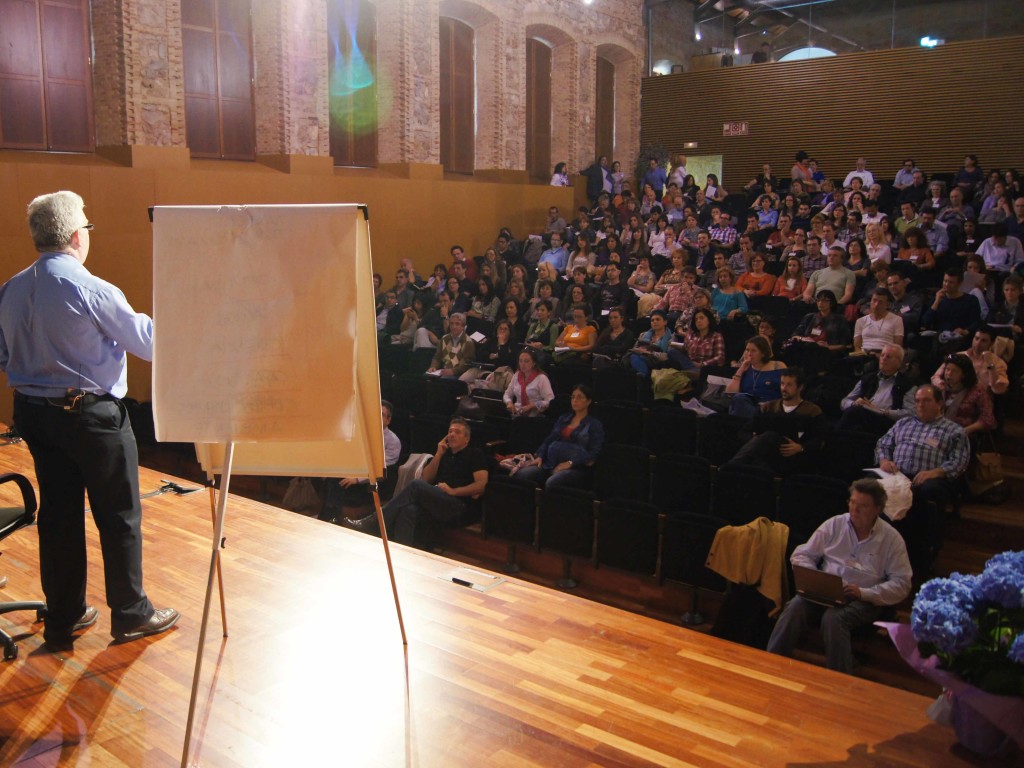
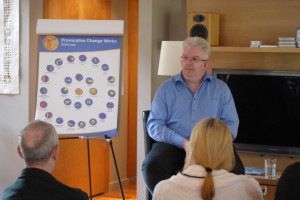 and amazingly we did even more than the last training here which was released as “The Art of Provocative Change Works” 9 CD set.
and amazingly we did even more than the last training here which was released as “The Art of Provocative Change Works” 9 CD set.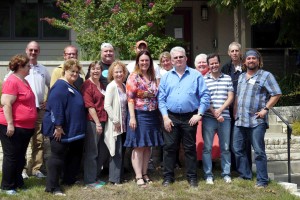
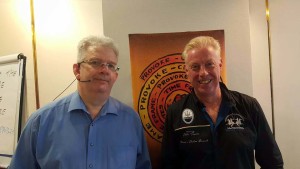 I just returned from the first Provocative Change Works training hosted by the Performance Partnership in London. This was an exceptionally well promoted and organized training and it was a real pleasure to work with a group that asked some many smart questions. Many folks will know that I run PCW trainings all over the globe and have some terrific hosts. I have also had some experiences where workshop hosts made a simple task ridiculously hard work! The London training was held in central London and ran from 10 – 7pm. It’s always a good sign when all the attendees arrive on time and I see a fully functioning PA. Both David Shepherd the owner of TPP share a love of hi fidelity and it’s great to see that this attention to audio translates to live events. The mics and speakers for the training are topnotch, in stark contrast to one overseas training when on day one we had to stop for 90 minutes to sort out technical issues!
I just returned from the first Provocative Change Works training hosted by the Performance Partnership in London. This was an exceptionally well promoted and organized training and it was a real pleasure to work with a group that asked some many smart questions. Many folks will know that I run PCW trainings all over the globe and have some terrific hosts. I have also had some experiences where workshop hosts made a simple task ridiculously hard work! The London training was held in central London and ran from 10 – 7pm. It’s always a good sign when all the attendees arrive on time and I see a fully functioning PA. Both David Shepherd the owner of TPP share a love of hi fidelity and it’s great to see that this attention to audio translates to live events. The mics and speakers for the training are topnotch, in stark contrast to one overseas training when on day one we had to stop for 90 minutes to sort out technical issues!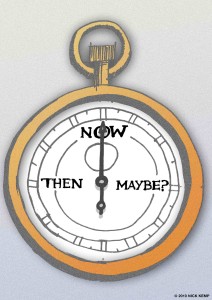 During this three day event almost everyone attending asked me about the possibility of running a level two training. I directed everyone to speak to Sally and David and being the smart folks that they are, they asked for dates on day three. This is a sign of a smart promoter. Instead of “thinking about another training” or “planning to speak sometime soon” we put the dates in the diary, promoted it to those in the room and took bookings! Common sense? Yes you would think so wouldn’t you, BUT I can give examples of when during a level 1 training 90% of the group asked for a level 2 and the host did NOTHING to get commitment there and then!
During this three day event almost everyone attending asked me about the possibility of running a level two training. I directed everyone to speak to Sally and David and being the smart folks that they are, they asked for dates on day three. This is a sign of a smart promoter. Instead of “thinking about another training” or “planning to speak sometime soon” we put the dates in the diary, promoted it to those in the room and took bookings! Common sense? Yes you would think so wouldn’t you, BUT I can give examples of when during a level 1 training 90% of the group asked for a level 2 and the host did NOTHING to get commitment there and then! In the 1980s and 1990s I worked extensively in the sales and marketing sectors being responsible for two startup operations that later became multi million pound concerns. I also had experience of negotiating a series of multi million pound contracts and still offer business trainings on a one to one basis as well as in house for companies. In developing the Provocative Change Works model I have learned a great deal about behavioural patterns and I have taught this PCW model to many established business concerns.
In the 1980s and 1990s I worked extensively in the sales and marketing sectors being responsible for two startup operations that later became multi million pound concerns. I also had experience of negotiating a series of multi million pound contracts and still offer business trainings on a one to one basis as well as in house for companies. In developing the Provocative Change Works model I have learned a great deal about behavioural patterns and I have taught this PCW model to many established business concerns.
 I thought New York’s customer service was as good as it can get, until I visited Japan. The Japanese are in my view the number one country for customer service, quite breathtaking. To date I have visited Japan nine times and travelled to a number of major cities including Tokyo, Osaka, Kyoto, Nagoya and Hiroshima. In every instance from the moment I arrive in the airport, there really is not match anywhere else for how helpful people are. I joked on social media during the last visit “How do you know if you are in Japan? You know because broadband is superfast and works immediately, everybody is helpful and polite, there are no charges for trolleys in the airport, and getting through immigration is super-fast, partly because they have a full complement of staff!” One store I always visit in Japan is the wonderfully named “
I thought New York’s customer service was as good as it can get, until I visited Japan. The Japanese are in my view the number one country for customer service, quite breathtaking. To date I have visited Japan nine times and travelled to a number of major cities including Tokyo, Osaka, Kyoto, Nagoya and Hiroshima. In every instance from the moment I arrive in the airport, there really is not match anywhere else for how helpful people are. I joked on social media during the last visit “How do you know if you are in Japan? You know because broadband is superfast and works immediately, everybody is helpful and polite, there are no charges for trolleys in the airport, and getting through immigration is super-fast, partly because they have a full complement of staff!” One store I always visit in Japan is the wonderfully named “ I just returned from my ninth trip to Japan to run trainings. Nick Kemp Training will be back again in 2016 for present another series of workshops in Osaka. I love Japan which is like no other place I have visited to date. The Japanese have the very best customer service on planet earth and an example to the rest of us. God only knows what the Japanese must think when they visit Europe and especially use public transport! Its an amazing country where you can discover ancient untouched buildings alongside the most modern cutting edge architecture.
I just returned from my ninth trip to Japan to run trainings. Nick Kemp Training will be back again in 2016 for present another series of workshops in Osaka. I love Japan which is like no other place I have visited to date. The Japanese have the very best customer service on planet earth and an example to the rest of us. God only knows what the Japanese must think when they visit Europe and especially use public transport! Its an amazing country where you can discover ancient untouched buildings alongside the most modern cutting edge architecture.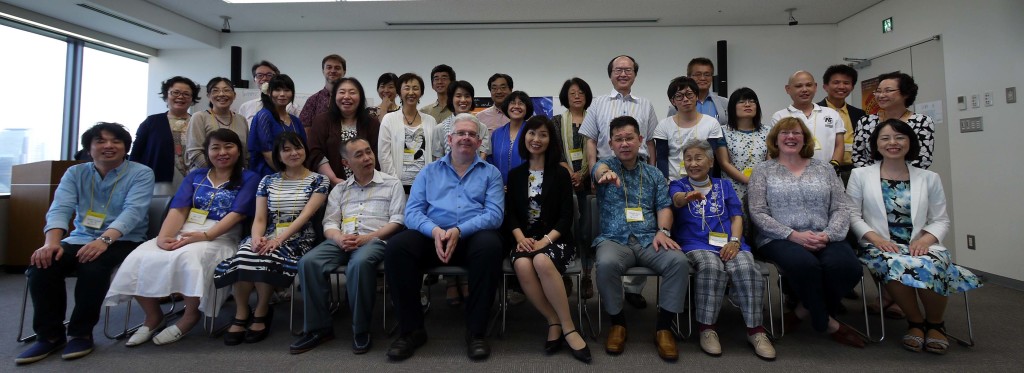
 I have finally emerged from 10 weeks of total frustration to now having created a new platform for my websites. Back in February out of the blue my then IT consultant announced that he was leaving the UK to live overseas. Also the main tech I dealt for 7 years left the company at the same time. This meant I would need to find a new way to run and host my 13 sites! The timing of this was dreadful as I was in the middle of a series of international workshops and I was already at full stretch time wise. However it has proved to be an invaluable learning experience.
I have finally emerged from 10 weeks of total frustration to now having created a new platform for my websites. Back in February out of the blue my then IT consultant announced that he was leaving the UK to live overseas. Also the main tech I dealt for 7 years left the company at the same time. This meant I would need to find a new way to run and host my 13 sites! The timing of this was dreadful as I was in the middle of a series of international workshops and I was already at full stretch time wise. However it has proved to be an invaluable learning experience.